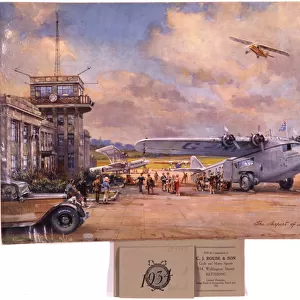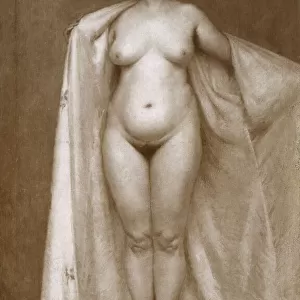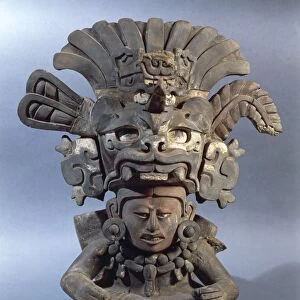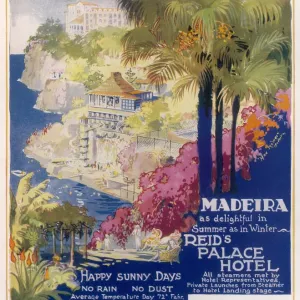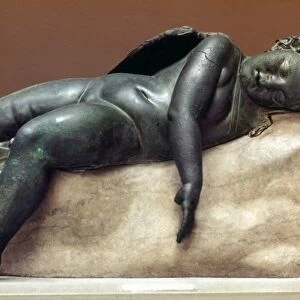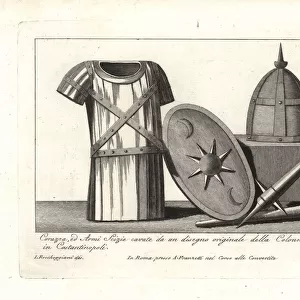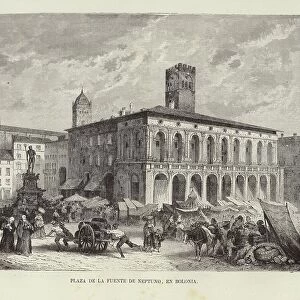Home > Arts > Artists > I > Indian School Indian School
Bacchanalian Relief, Pakistan, Gandhara, Buner area, early Kushan Period (AD 1-320
![]()

Wall Art and Photo Gifts from Fine Art Finder
Bacchanalian Relief, Pakistan, Gandhara, Buner area, early Kushan Period (AD 1-320
3899094 Bacchanalian Relief, Pakistan, Gandhara, Buner area, early Kushan Period (AD 1-320) (schist) by Pakistani School, (1st century AD); Cleveland Museum of Art, OH, USA; (add.info.: Overall: 49.6 x 150.5 cm (19 1/2 x 59 1/4 in.); First Section: 17.1 x 44.5 cm (6 11/16 x 17 1/2 in.); Second Section: 16.5 x 53 cm (6 7/16 x 20 13/16 in.); Third Section: 16 x 53 cm (6 1/4 x 20 13/16 in.).
Phrygians with their trousers, tunics, and conical caps play music, dance, and clap, while Greek figures drink from fluted cups filled with wine decanted from pitchers filled from a wine skin, shown hefted on the shoulders of the figure at the right. The multicultural diversity of the region became pronounced after Alexander of Macedon left a contingent of Greeks to rule the territories of present-day Afghanistan and Pakistan. After the waning of the Hellenistic kingdoms in the first century BC, Scythians and Parthians from Central Asian and Iran took control of the region. By the first century AD, trade between the Roman Empire, India, and China had reached unprecedented proportions, bringing wealth and international merchants to the area. A procession of people clapping, blowing a long horn, dancing, and carrying grapes once adorned a Buddhist monument in a region that had Greco-Roman roots extending back to 326 BC, with the arrival of Alexander of Macedon and his successors. Bacchanalian scenes were carved on the lower portions of public monuments to reference the joyful abundance of life, which may well be enhanced with veneration of the monument and donations to the monastery with which it was associated.); Dudley P. Allen Fund; Pakistani, out of copyright
Media ID 23660866
© Dudley P. Allen Fund / Bridgeman Images
Abundance Alcoholic Beverage Appropriation Bacchanale Bacchanalian Buddhism Buddhist Colony Dionysiac Diversity Drunk East Eastern Feasting Festival Frenzy Gandhara Greco Roman Hellenistic Inebriated Influence Joie De Vivre Merrymaking Monastic Multicultural Pakistan Pakistani Parade Parthian Phrygian Spirituality Triptych West Western Kushan Pagan Paganism
FEATURES IN THESE COLLECTIONS
> Arts
> Artists
> I
> Indian School Indian School
> Arts
> Artists
> R
> Roman Roman
> Arts
> Artists
> S
> Scythian Scythian
> Asia
> Afghanistan
> Related Images
> Asia
> India
> Related Images
> Asia
> Iran
> Related Images
> Asia
> Pakistan
> Related Images
> Fine Art Finder
> Artists
> Pakistani School
> Fine Art Finder
> Artists
> Spanish School (after)
EDITORS COMMENTS
This print showcases the "Bacchanalian Relief" from Pakistan's Gandhara region, dating back to the early Kushan Period (AD 1-320). Created by the Pakistani School in the 1st century AD, this schist artwork is housed at the Cleveland Museum of Art in Ohio, USA. The relief depicts a lively scene where Phrygians and Greek figures engage in revelry. The Phrygians are shown wearing trousers, tunics, and conical caps as they play music, dance, and clap. Meanwhile, the Greek figures indulge in drinking wine from fluted cups filled with wine decanted from pitchers obtained from a wine skin carried on one figure's shoulders. This artwork reflects the multicultural diversity of the region during that time. After Alexander of Macedon left Greeks to govern present-day Afghanistan and Pakistan following his conquests, Scythians and Parthians took control. Trade between Rome, India, and China flourished during this period as well. The relief was originally part of a Buddhist monument adorned with a procession of people clapping hands, blowing horns, dancing joyfully while carrying grapes. These scenes symbolized an abundant life associated with veneration for the monument and donations to its affiliated monastery. With its historical significance rooted in Greco-Roman influences dating back to Alexander's arrival in 326 BC until trade expansion during Roman times; this Bacchanalian Relief offers us a glimpse into ancient cultural exchanges within Central Asia.
MADE IN THE UK
Safe Shipping with 30 Day Money Back Guarantee
FREE PERSONALISATION*
We are proud to offer a range of customisation features including Personalised Captions, Color Filters and Picture Zoom Tools
SECURE PAYMENTS
We happily accept a wide range of payment options so you can pay for the things you need in the way that is most convenient for you
* Options may vary by product and licensing agreement. Zoomed Pictures can be adjusted in the Basket.


